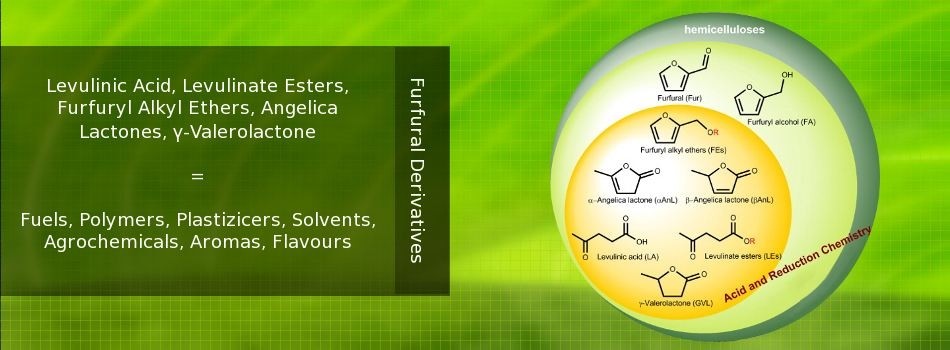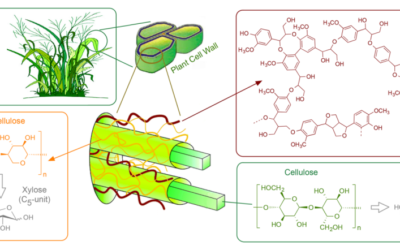
One-pot furfural conversion, using a zeolite catalyst
Our International Furan Technology (Pty) Ltd subsidiary supplies biomass processing technologies for the manufacture of furfural (and other bio-renewable chemicals). We therefore have our ‘radar screen’ set on new processes or down-stream product developments and as a result, the following research caught our interest.
Heterogeneous, stable catalyst promoting acid and reduction routes to bio-products.
Abstract [1]
Aiming at the valorisation of furfural via sustainable routes based on process intensification and heterogeneous catalysis, the one-pot conversion of this renewable platform chemical to useful bio-products, namely furfuryl alkyl ethers (FEs), levulinate esters (LEs), levulinic acid (LA), angelica lactones (AnLs) and γ-valerolactone (GVL), was investigated using a single heterogeneous catalyst, in 2-butanol, at 120 °C. Various chemical reactions are involved in this process, which requires catalysts with active sites for acid and reduction chemistry. For this purpose, it was explored for the first time the catalytic potentialities of modified versions of zeolite beta containing Al and Sn sites prepared from commercially available nanocrystalline zeolite beta via post-synthesis partial dealumination followed by solid-state ion-exchange. The post-synthesis conditions influenced considerably the catalytic performances of these types of materials. The best-performing catalyst was (Sn)SSIE-beta1 with Si/(Al + Sn) = 19 (Sn/Al = 27), which led to total yield of bio-products of 83% at 86% Fur conversion, and exhibited steady catalytic performance for six consecutive runs. A systematic catalytic study using the prepared catalysts with different bio-products as substrates, together with the molecular level and microstructural characterisation of the materials, helped understand the effects of different material properties on the specific reaction pathways in the overall system. These studies led to mechanistic insights into the reaction network of Fur to the bio-products in alcohol media, upon which a kinetic model was developed for the first time. The superior performance of (Sn)SSIE-beta1 in various steps was related to the dealumination degree, dispersion and amount of Sn-sites, and acid properties. Continue



